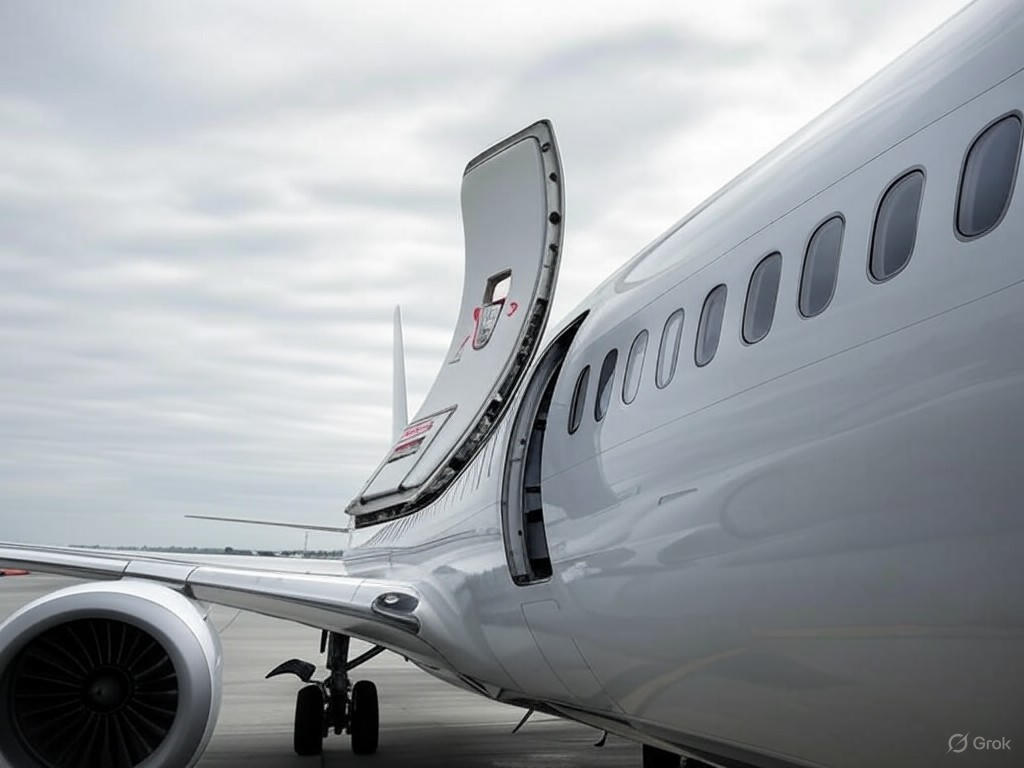In a shocking incident that could have ended in tragedy, a door panel detached from an Alaska Airlines aircraft during a flight last year, soaring into the sky as passengers and crew watched in disbelief. Thankfully, no injuries were reported, but the event has cast a harsh spotlight on aviation safety protocols and the responsibilities of key industry players like Boeing and the Federal Aviation Administration (FAA). Investigators have since concluded that this alarming mishap was entirely preventable, raising critical questions about oversight and accountability in the aviation sector.
The midair detachment of the door panel was traced back to improper installation, a seemingly minor error with potentially catastrophic consequences. Experts analyzing the incident have pointed fingers at Boeing, the aircraft manufacturer, for failing to ensure rigorous quality control during production and assembly. Additionally, the FAA, tasked with regulating and enforcing safety standards, has come under fire for what some describe as inadequate monitoring of manufacturing processes. Reports suggest that warning signs were present long before the incident, with prior concerns about assembly practices at Boeing facilities. Yet, these red flags appear to have been overlooked, allowing a preventable flaw to slip through the cracks.
This event has reignited debates over how much responsibility lies with manufacturers versus regulators in maintaining the safety of commercial flights. Boeing, already grappling with a tarnished reputation following past controversies, now faces renewed scrutiny over its internal checks and balances. Critics argue that the company must prioritize safety over speed in production to avoid future mishaps. Meanwhile, the FAA’s role as a watchdog is being questioned, with calls for stricter audits and more proactive interventions to identify risks before they manifest in dangerous ways. The Alaska Airlines incident serves as a stark reminder that even small oversights can lead to significant threats at 30,000 feet.
Beyond the immediate players, this incident has broader implications for the aviation industry. Public trust in air travel, which has taken years to rebuild after various high-profile accidents, could be shaken if such preventable errors continue to surface. Airlines, manufacturers, and regulators alike must work collaboratively to restore confidence by demonstrating a commitment to uncompromising safety standards. Some industry analysts suggest that adopting advanced technologies for real-time monitoring of aircraft components during assembly could help catch issues early. Others advocate for more stringent training programs for personnel involved in critical manufacturing stages.
As investigations wrap up, the Alaska Airlines door panel incident stands as a cautionary tale for the aviation world. It underscores the importance of vigilance at every level, from the factory floor to the regulatory boardroom. While no lives were lost this time, the event is a wake-up call that complacency has no place in an industry where safety is paramount. Boeing and the FAA must take decisive action to address systemic gaps, ensuring that such a near-miss never escalates into a disaster. The skies demand nothing less than perfection, and it’s time for the industry to rise to the challenge.
